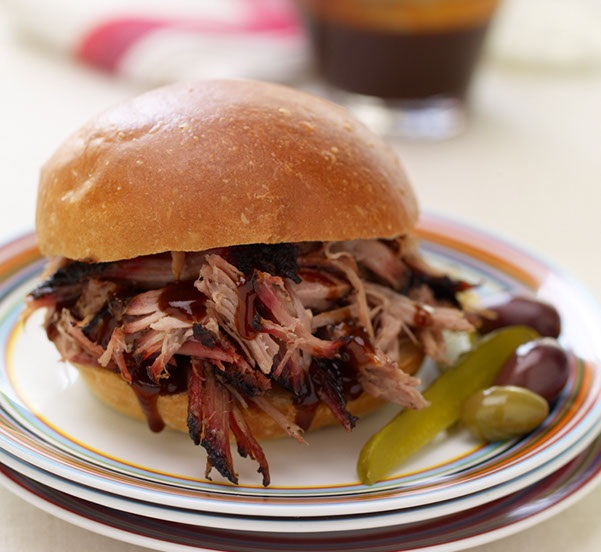Rendering an otherwise tough pork shoulder into fall-apart bliss through hours upon hours of slow, low-temperature cooking is one way to elevate the humble to the exalted.

Pulled pork in this hemisphere is a direct result of cultural interplay between the native populations in the Americas and the Spanish who brought European culture to the New World. Its most direct precedent is the native slow-roasted pork dish called barbacoa.
Cuts to Use
The most common cut for making pulled pork is the pork shoulder. In some cases the whole shoulder, which includes the butt and the shank, is used. In championship barbecue circles, however, the most common cut is just the top part of the shoulder known as the Boston butt.
Pork from Berkshire and heritage-breed pigs have considerably more marbling than commodity, supermarket pork. This is an important consideration because that inter-layered fat will render while cooking and essentially baste the butt from the inside as it cooks.
Most would agree that using a bone-in butt produces a better tasting result. When cooked to the proper temperature, the blade bone should just slip out or even fall out on its own.
The butt is preferred because it is a relatively inexpensive cut that has firm tasty flesh with ample ripples of fat that will render while the roast smokes and smolders over an aromatic fire infused with hickory-wood smoke. Combining a fruit wood like apple, peach, or cherry adds distinctively lighter and sweeter smoky flavor notes.
Preparation
The biggest step in cooking a pork shoulder for pulled pork is getting the running temperature in your smoker right. The shoulder should require little if any trimming, so prep time is minimal.
Coating the butt with a dry rub is fundamental, but when you do it is a matter of personal taste. Some like to apply a dry rub up to a day before to let the seasonings sink into the meat. On the other hand, some prefer to apply a generous layer of dry rub and put the butt right into the smoker. It’s really up to you.
Basting
Mopping a pork butt is the process of applying a thin, usually vinegar-based sauce that will help the butt retain moisture throughout the long hours of cooking in the smoker.
The mop sauce is traditionally applied with a mop, actually a cotton bottle washer. Using a mop helps apply the mopping sauce without disturbing the crispy, crunchy, tasty crust—also called bark—that develops on the outside of the roast as it cooks.
How Long?
If you are using just the bone-in Boston butt, figure it will weigh about 6 to 7 pounds and will require 1 to 1 ½ hours per pound in the smoker, depending on how hot your running temperature is.
In terms of doneness, you have two options. At 165°F, the pork butt will be done and ready for slicing. The magic happens when the butt reaches an internal temperature of about 190°F. At that temperature, the collagen that holds the shoulder together is heated to the point at which it dissolves. This renders the shoulder tender enough that it can be pulled with ease.

Serving
After removing the bone and discarding any unwanted fat, the pork and be shredded, chopped, or pulled using two forks at the same time.
Simply mix the pulled pork with your favorite barbecue sauce and serve with plenty of napkins and your favorite side dishes.
Have you ever made pulled pork from scratch? What’s your favorite type of sauce to serve with it? What type of smoking woods do you use?



Leave Your Response